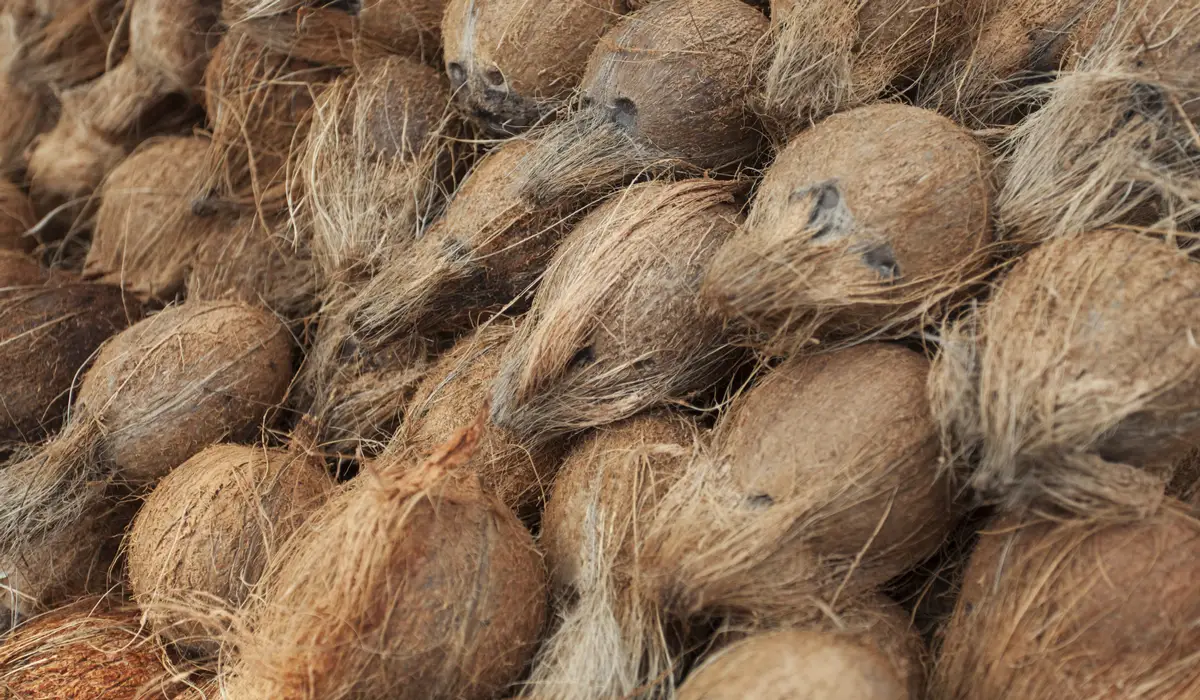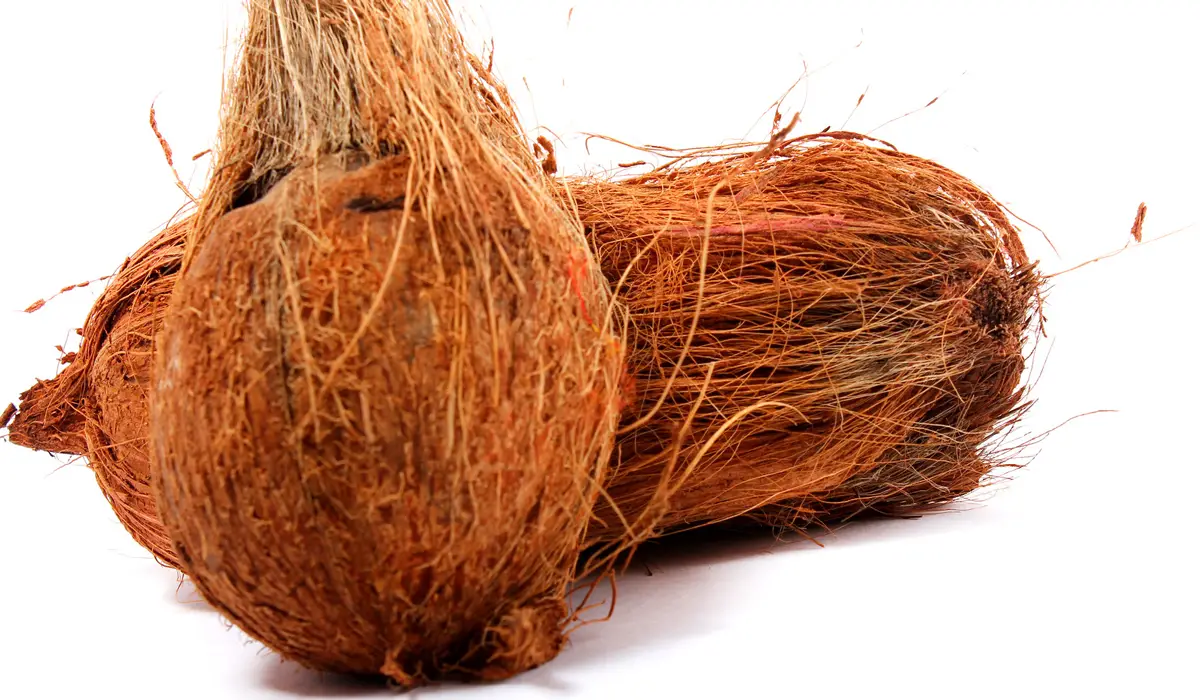What’s the Difference between Coco Coir vs Coco Peat? Two Peat Moss Alternatives

This post follows our research editorial guidelines.

Coco products are a versatile and sustainable tool for the home gardener. I love to use coir as a moist mulch on my indoor plants, and it’s so rewarding to see seeds sprout in coco peat. It’s also cheaper than clay pebbles, and far kinder to the earth than mosses harvested from peat bogs around the world. Coco coir has long been used to improve the quality of potting blends and even garden soil, but what about coco peat? And how do they stack up when compared to mosses?

Table of Contents
How Are Coco Peat and Coco Coir Different from Each Other?
Coco Peat and Coco Coir are both made from coconut husks left over after the nut is harvested. Coir is more fibrous than peat, with better water holding capacity, but peat is more nutritious. Mix peat or coco coir with potting soils for best results.
Peat Moss vs Coco coir: How to make a sustainable choice
Ask what’s best for potted plants, and you’ll get tips to add organic matter to the mix. Usually that’s sphagnum moss, peat moss and coco coir products, with different recipes for different plants. They’re also recommended for use in hydroponics as a growing medium to house different crops as they grow.
While they’re often discussed as one there’s a big difference between coco coir products and mosses. While both are naturally occurring and biodegradable, how they are produced are very different.
Moss comes from peat bogs, slow-growing ancient swamps containing generations of plants. Sphagnum peat moss bogs are vulnerable and delicate ecosystems, and the harvest of plants like sphagnum moss causes irreparable damage. Not only that, but conserving peat bogs is an important part of fighting climate change.
In contrast coco peat and coir are a by-product of food production. They’re made from discarded husks of coconuts grown for their meat. They’re are a major part of food culture all through South East Asia where much of our coco coir is made. Both coco coir and coco peat production keeps that useful material out of landfill. It’s very sustainable and much better for the environment!
What is Coconut Coir?
What is Coconut Coir?
Coconut coir is often used as a catchall term for coconut fibers in general. The toughest and longest sections that coconut coir contains are often turned into ropes or woven into mats or sacking. Shorter fiber becomes brushes or other home goods.
But gardeners know it more as the dry coco coir bricks of mixed length fibers, with a bit of dust and stray bits of husk too. Coir manufacturers dry the coir and press it into shape in a way that allows for more efficient shipping. It’s also commonly found in small discs or wafers for use as seed starters. Other uses are in seed starting plugs and biodegradable seedling pots. It’s a truly versatile substance!
Coir has proven to hold moisture well, wet more easily than peat, drain well, decompose more slowly and withstand compression better than peat. Plus coir dust does not have the small sticks and possible seeds that peat has.
Linda McMahan, horticulturist, Oregon State University Extension Service
Coco Coir Advantages
Coco coir is tough stuff. It takes a while to break down, so it’s well suited to provide long lasting structure in your potting mixes and soil. It holds water well but still maintains lots of air pockets essential for root growth. Mix coco coir with potting soil and it will hold water wonderfully no matter how thirsty your plant gets.
For us hydroponics enthusiasts, coco coir is an excellent growing medium. While it breaks down it does so slowly, and won’t mess with our nutrient solution. It comes with very little of its own nutrient load making it a predictable choice. It’s also pH neutral and has reliable electrical conductivity and water-holding capacity.
Coco Coir Disadvantages
The biggest disadvantages with coir come down to that low nutrient load that makes it so good for hydroponics. It contains little to no nitrogen so the more coir in soil the more you’ll need to monitor the growth of your plants.
It also tends to be pH neutral as it does decay. This may not seem like too much of a problem, but given most plants need mildly acidic soils it’s easy for your pH to head up into alkaline territory without something to balance it. In contrast the natural acids in peat moss become available as the material breaks down and keep those desirable growing conditions for longer.
What is Coco Peat?

Coco peat is also made as part of coconut processing. It generally is made from very short fibers and coco dust that would otherwise be thrown away. It has a grainy texture when compared to coco coir’s fibrous structure. Like coconut coir it’s often shipped totally dry, though you’re more likely to find it pressed into discs or seed starting cubes than the big coconut coir bricks.
Coco Peat Advantages
Coco peat has a few things going for it. It’s more nourishing than coco fiber, and is more responsive. It’ll soak up water and nutrients faster, and it breaks down like regular garden compost. It also tends to have a richer load of microbes that will help cultivate healthy soils that are packed with beneficial bacteria and fungi. It’s particularly good for germinating seeds. In fact it’s common for commercial seed raising mixes to be nothing more than this type of peat with a fancy label.
Coco Peat Disadvantages
The biggest disadvantage for coco peat I’ve had to deal with is just how hard the stuff is to find. Almost all coconut husk products are labelled as ‘coir’ no matter what’s inside. Often I’ve opened a package of ‘peat’ only to find it’s almost entirely thick coir fiber and very little of the rich peaty dust.
Coco peat does also share some of the issues with pH that coir does. It also tends to be richer in phosphorus and potassium than is best, so watch your fertilization practices. You might need to ease up on the P and K after breaking out the peat.
How To Make Coco Peat At Home
I get around the dearth of real coco peat by making my own. To try it for yourself, you will need:
- coconut fiber
- blender
- water
- bowl
- Large spoon or stirring stick
- sieve
1. Source Coconut Fiber

To start you’ll need a good amount of coconut fiber. If you like to eat fresh coconut you can rip it straight from the nut itself. The stiff white middle layers are best and can be yanked free with plyers and a bit of elbow grease. Given I’m in Ontario, far away from any coconut trees, I instead opt to use commercial coco coir instead. Both are fine.
2. Blend To a Powder
No matter what you opt for, next you need to blend your fiber into a fine powder.
3. Sift Out Chunks
Sift the resulting powder into a clean bowl to remove any large bits of coir. You might need to re-blend some of the bigger bits.
4. Hydrate Fiber
Add water slowly and mix it thoroughly through your powder in order to hydrate it. Aim for a peanut butter like consistency that is evenly moist.
5. Remove Excess Moisture
Allow the peat to rest overnight. Squeeze out any excess water and you’re good to go! To store, place it in a container in a warm dry location and allow it to dehydrate. It’ll form a brick roughly the shape of your container.

Where To Buy Coco Peat and Coco Coir
Despite reports that coir products are rare and hard to find in the Americas, it’s become increasingly easy to get your paws on in recent years. People are more enthusiastic about replacing the use of peat moss and stores are responding enthusiastically to the demand. These days pretty much any garden store that stock peat moss also stock substitutes for peat too. Depending on where you are you might find that coir is more expensive at times, but personally I think it’s still cheap compared to the damage peat harvest causes. You can easily buy coco peat or coco coir from Amazon, there are a few great options including this one.
Can coco coir be instead of potting soil?
It’s not advisable to use coco coir instead of potting soil. While it provides excellent aeration and support for roots, it doesn’t have a lot of nutrition of its own. Hydroponic growers use coir precisely because it has very little to it, allowing them perfect control of the nutrient profile in the soil. But for a pot plant, it’s a lot of work for very little return.
Realistically it’s best used as a soil amendment. A mix of at least half coir and half soil is great for plants that want a rich, loamy growing medium. One third each coco, perlite and potting soil is a good all-rounder, and tropicals will do better with an equal measure of orchid bark tossed in too.
Is coco coir the same as coco soil?
Coco soil products often contain other materials that make them more like standard potting mixes. They may also be aged to create a more compost like material, or enriched with perlite, orchid bark or even other coconut husk products. There’s a lot of really confusing products out there, so it pays to read the label thoroughly so you know what you’re getting.
Final Thoughts
I’m always on the lookout for sustainable ways to keep my plants lush and green. Peat moss may be a social media darling right now but coco coir products also achieve much the same results with a much smaller environmental footprint. Ditching mosses in favor of coir makes a lot of sense once you know the differences between coco peat and coco coir and what you can do with both.
